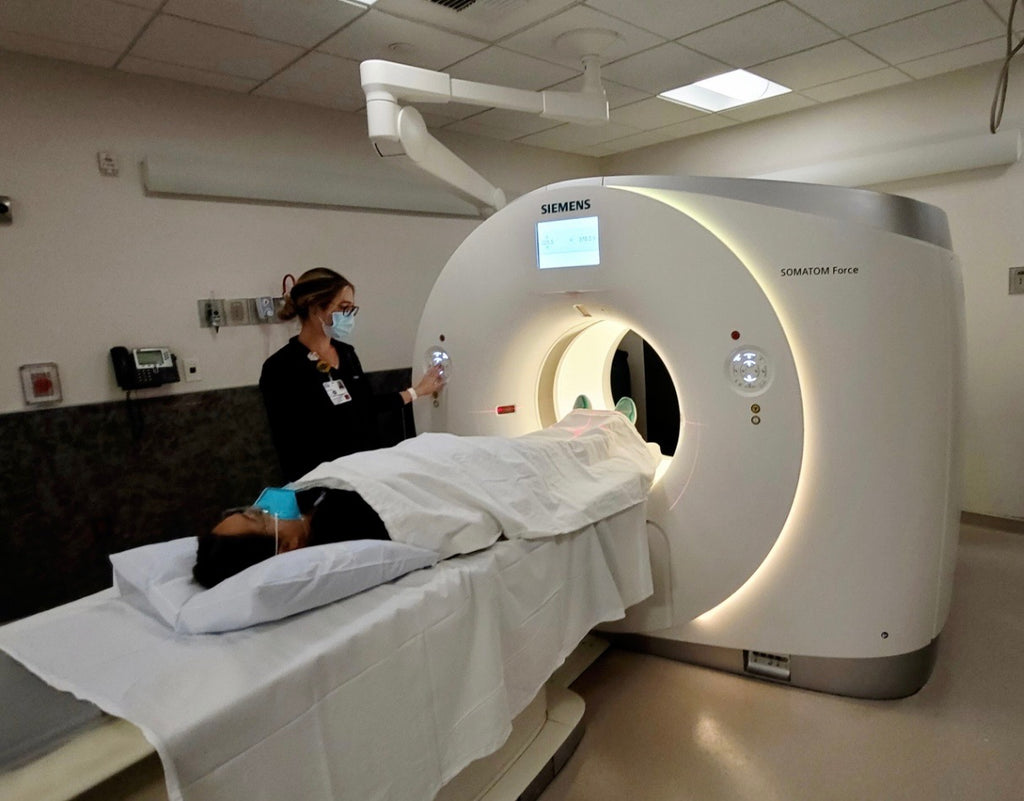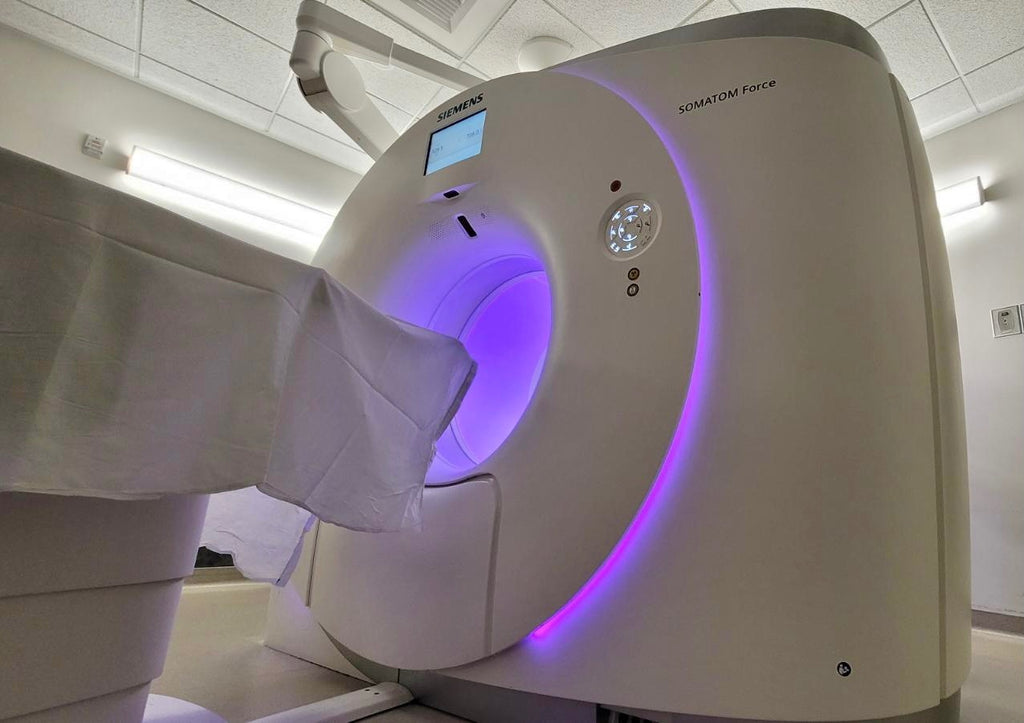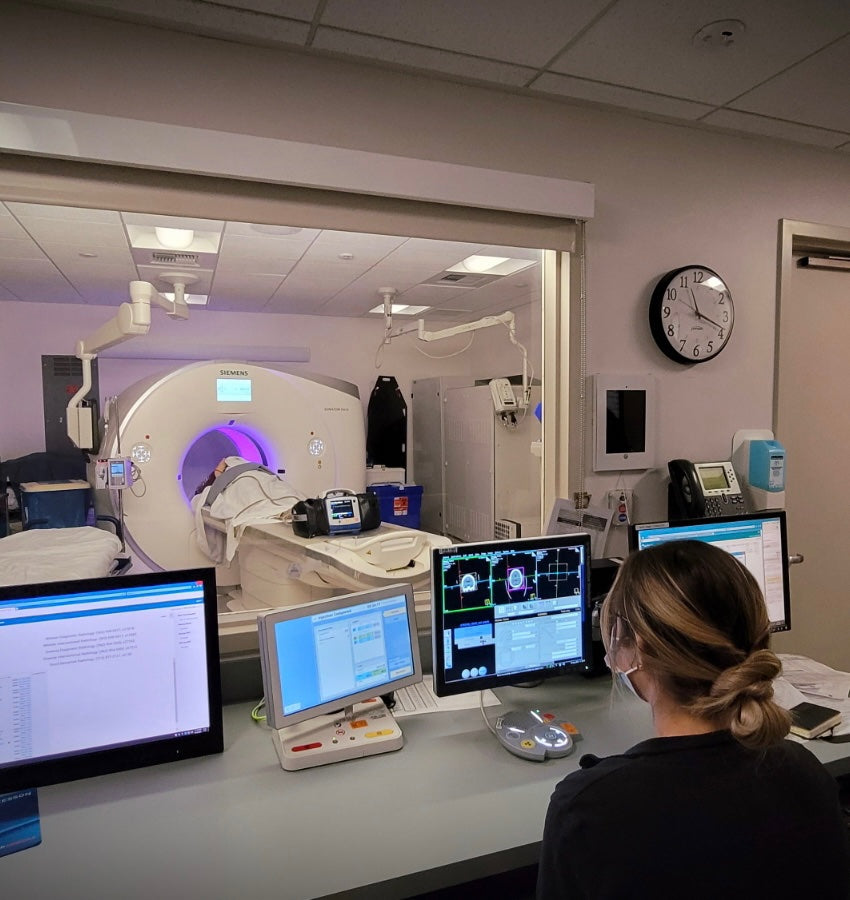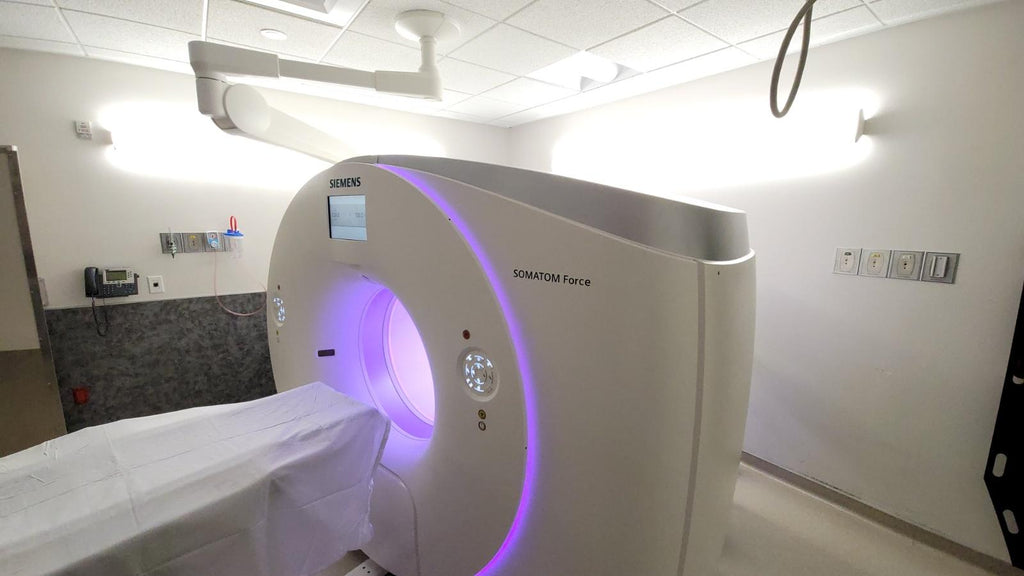What is a CT Scan Anyways?
The “CT” in “CT Scan” stands for Computerized Tomography. A CT is also known as a Computerized Axial Tomography (CAT).

CT scans combine narrow, rotating X-ray beams producing cross-sectional images of the body.
Overall, a CT scan image has more information than an X-ray image since it generates images of various body parts such as:
- Head
- Neck
- Chest
- Abdomen
- Pelvis
- Bones
- Heart
What Conditions Does a CT Scan Detect?
A CT scan can detect diseases as well as check the extent of an injury. From the CT imaging capability, a doctor can:
- Evaluate for multiple causes of abdominal and pelvic pain.
- Diagnose many cancer types such as liver and lung cancer.
- Detect the existence of a tumor, its size, and location. With a CT scan image, the doctor can see how far cancer has spread to other tissues.
- Pinpoint a muscle disorder, fracture in the bone, or an infection.
- Detect an abnormal swelling or inflammation in the internal organs of the body. A doctor can see any lacerations of the kidneys or liver.
- Examine blood vessels and internal bleeding.
- Assess for swelling or bleeding in the brain with a head scan.
- Check for diseases in the bone and the condition of the spine of a patient.
- Determine if there is abnormal tissue in the body. After that, a doctor can plan for a biopsy, surgery, or radiotherapy session.
- Check on the effectiveness of a drug in treating conditions like heart disease or cancer.

Specialized CT scans:
- Postoperative joint and spine pain with metal artifact reduction
- Ruling in or ruling out gout as a cause of joint pain with dual energy technique
- Bone length scan with minimal radiation
- 3D modeling of complex fractures
- Preoperative localization of parathyroid adenoma
- Check for calcium in the coronary arteries to assess risk of heart attack
- Check for narrowing or blockages in the coronary arteries for chest pain
- Evaluate anatomy of congenital heart disease

What is the CT Scan Procedure Like?
Most Computerized Tomography exams do not need a patient to prepare. Yet, there are exceptions for examinations of the pelvis or abdomen, colon, and CTs that need a PET exam.
For abdominal and pelvis CT exams, the patient should not eat or drink at least three hours before the test. If you are on other medications, you may have a small sip of water as you take them.
Before the scan, the physician gives you a contrast material (a special dye) to drink. The dye makes the X-ray images appear more transparent by highlighting the area of focus. Or, the physician may administer the contrast solution through the enema or a vein on your arm. For rectum administration, the patient must not eat four to six hours before the scan.
Before entering the CT scanner, the doctor will ask you to remove any metal items and put the hospital gown on. Metal objects affect the outcome of the CT scan result. Then, lie on the table, which will slide into a scanner, with an X-ray machine rotating around you. Each cycle creates images of the patient's body.
During the scan, you may hear clicks and buzzes in the machine. The table slides shortly at a given time until the CT exam ends. A CT examination takes around twenty minutes to at most one hour. The physician communicates with the patient through the intercom from the control room.
The patient should remain still on the table during the test. Shaking or moving produce blurry images. If you feel uncomfortable, the doctor can ask you to hold your breath shortly. Children may undergo sedation first to keep them still.
Upon completion of the test, a radiologist reads and interprets the information. Your doctor will then explain the results in terms you can understand.

What's the difference between a CT Scan & an MRI?
CT Scans and MRIs differ in a variety of ways. Here are the top differences between them:- Magnetic Resonance Imaging (MRI) uses magnets and radio waves, while CT uses X-rays.
- The CT scans tend to be ordinary and less expensive, but MRI scans are costly.
- A CT scan is better for large surfaces, unlike an MRI that gives an entire image under focus.
- A CT scan results come back faster than results for an MRI test; hence CTs are best used for cases of trauma.
- Images of the lungs and chest cavity area are better with a CT scan than an MRI scan.
- The CT is quieter than an MRI machine. The MRI is loud such that a patient has to wear earplugs or headphones to lessen the noise.
Risks Involved in Getting A CT Scan
A CT scan exposes a patient to small levels of ionizing radiation. More prolonged and frequent exposure can increase the risk of thyroid issues and cancer.

The radiation from the CT scan may cause harm to your unborn child. Inform the doctor if you are expectant so that they may suggest another test.
Although rare, some patients may develop medical issues or allergies from the contrast. Most reactions are gentle and can cause an itch or a rash. Some reactions could be severe. Let your doctor know whether you have ever reacted to contrast material.
Note: A lactating mother requires an IV dye for the contrast. She should thus withdraw from breastfeeding for twenty-four hours after a CT scan. The dye may pass to the breast milk.
Have any questions or want to get in touch with our Los Angeles radiology experts? Contact us to schedule an appointment or give us a call anytime!
Sources:
Ross, H. (2012, August 15). CT (Computed Tomography) Scan. Healthline; Healthline Media. https://www.healthline.com/health/ct-scan
Brazier, Y. (2018, July 24). CT scan or CAT scan: How does it work? www.medicalnewstoday.com. https://www.medicalnewstoday.com/articles/153201
Computed Tomography (CT) Scans. (n.d.). Cedars-Sinai. https://www.cedars-sinai.org/programs/imaging-center/exams/ct-scans.html
Mayo Clinic. (2018). CT scan. Mayoclinic.org; https://www.mayoclinic.org/tests-procedures/ct-scan/about/pac-20393675
What is the difference between CT scans and MRI scans? (n.d.). The OPA. Retrieved August 8, 2021, from https://opa.org.uk/what-is-the-difference-between-ct-scans-and-mri-scans/

